Paul Pearson led me back tp the world’s greatest card game. Continue reading
Between 1970—-when I left college—and 2003 the game of bridge was not really part of my life. However, every so often I thought about it and wondered how the game might have evolved. At the same time I was frustrated with my lack of friends locally. In fact, I really only had one, Tom Corcoran, and he was quite busy with his job and family. I wanted the opportunity to be around people with whom I could have intelligent conversations. The people at TSI sort of qualified, but I was the boss; it was difficult to become true friends with the employees.
I had already been taking classes in Italian at Enfield High School. These classes were sponsored by the town’s Continuing Education department. I enjoyed that experience, which is described here.
Twice a year the Enfield school systems mailed to its residents a flyer that described the offerings for the upcoming term. In the one for the classes beginning in January of 2004 I noticed that two bridge classes were being offered—one for beginners and one for those who had already taken the beginning class. Of course, I had not taken the beginning class yet, but I signed up for the latter one anyway. Unlike the Italian classes, this one was at Enfield’s newer and more convenient high school, Enrico Fermi1, less than a mile from my house and right on my usual jogging route.
At the first class I met the instructor, Paul Pearson, who at the time was, I seem to remember, a Bronze Life Master. There were six or eight others in the class—all couples. None was as serious as I was at getting back into the game. Paul was surprised to learn that I had played a little duplicate bridge2 thirty or so years earlier. I think that I may have played in one team match in the dorm at Michigan, too. The other students in Paul’s class wanted to be able to play with their friends or relatives once or twice a year. One couple even remarked that they did not need to learn how to keep score because their friends always kept score.
Paul used a pamphlet-sized book that explained how to bid using five-card major suits (hearts and spades). When I was learning to play the game people began the process of bidding by selecting their “best” suit, a somewhat amorphous way of combining length (number of cards in the suit), strength (Ace=4; King=3; Queen=2; Jack-1), and shortness (singletons, doubletons, and voids). In the modern approach bidding a major suit guaranteed—with almost no exceptions—at least five of the suit that was named in the opening bid. A-K-Q-J was no good; 6-5-4-3-2 was fine. The strength of the hand was measured separately. Minor suits and notrump had different rules.

When I had learned to play bridge back in the sixties two-level bids were reserved for very strong hands. By 2000 most players in North America used all of these bids (except 2♣) to describe hands that were too weak to open at the one-level, but featured six cards in the bid suit.
By the time that I graduated from college in 1970 I had learned a different system, the Big Club promulgated by Howard Schenken. In this system all strong hands were opened with the lowest possible bid, 1♣. I considered this approach vastly superior to what everyone else was playing, and I felt certain that by the twenty-first century everyone would be using something similar. I was wrong. The only major changes to the basic requirements for standard bidding were the two that Paul taught us—five-card majors and weak two bids.
I later came to understand that most of the other holes in the standard bidding system that I had recognized when I was in college had been addressed by specific conventions. Whereas in the sixties most players thrived with only a couple of conventions, in the twenty-first century there were dozens of widely used conventions to choose from and several hundred exotic ones.
I cannot remember too many details of what Paul actually taught us in class. He recognized that it was unrealistic to expect any of us to be competent at the game after only a few hours of lessons. My most vivid memory of the classes occurred once when Paul was not even present in the room. For some reason we had gathered at the Enfield Senior Center that week to play a few hands. My partner was Paul’s wife, Sue, who was also a Life Master. I don’t remember the opponents. Four of us played at card table in a small elegant room that had a functioning fireplace.
Paul had set up a few hands for the class to play that evening. On one of them I was the declarer. I remember exclaiming to anyone who would listen, “There’s an Endplay3 here, and it looks like it will work!” Sure enough, I deliberately allowed one of the opponents to capture a trick and thereby won two in return.
Paul encouraged us to read the Courant‘s daily bridge column. I recall that one of the answers to a bidding question that I encountered there was a 2NT bid that I did not understand at all. I asked about it in class. Paul explained that it was a convention known as the Unusual Notrump that allowed the player to show two five-card suits with just one bid. I was delighted to learn that there was such a marvelous invention. I remember telling Paul that I did not think that I could stop myself from using it.
I recalled that I had practiced back in the sixties using a contraption called Autobridge, which was endorsed and marketed by Charles Goren himself. I still had it when I took the class. However, it did not age well. The play of the hands was still instructive, but even someone who knew as little as I did could tell that the recommended bidding was not optimal.
Paul knew about Autobridge. He had used it himself back in the sixties. He said that there were now computerized systems that allowed the user to specify which set of conventions were being used—both by the player and his computerized partner and by the robotics opponents.
Several of these computer games were available for purchase. The one that Paul recommended, Bridge Baron, included literally thousands of hands that had been played at actual tournaments. You could compare your performance with that of the rest of the field. What a great idea!
I promptly purchased a copy of Bridge Baron 15 and installed it on my laptop. I used it to improve both my bidding and my play. I played every hand from every tournament—some of them multiple times. I also practiced the use of many new conventions in a special set of programs in BB 15 designed for that purpose. The best part was that I could use it in in the otherwise wasted hours that I spent in airports and on airplanes.
After classes I usually stayed around to talk with Paul for a few minutes. After our very last session I informed him that I felt that I needed to play some hands on a regular basis. He asked me if I just “wanted to pitch cards”? If so, there was a weekly game at the Senior Center. I said that I really wanted to play in a serious duplicate game even though I knew that I would be overmatched at first.
Paul said that the best games were at the Hartford Bridge Club, but that might not be a feasible option until I had a regular partner. He recommended the weekly Wednesday evening game in Simsbury, CT, which was about a thirty minute drive from Enfield. He said that the club’s director, Paula Beauchamp, guaranteed a partner for everyone who attended. If an odd number of people showed up, she would participate as partner of one of the attendees. Paul provided me with contact information for her.
He also informed me that most of the best players in the Hartford area were either actuaries or computer programmers. I told him that I had worked as an actuary for two years, and I had been a software developer for more than twenty. He told me that he had been a programmer, too, but he had learned to program using Assembler, which, as I understood it, was only one step above programming with a soldering iron.
I eagerly got in touch with Paula via email. I told her that I would like to play in her game at the SBC, but I needed a partner. I also noted that I was at that time taking Italian classes on Wednesday evenings. That spurred her curiosity. My last class would be in early May, a few weeks away. She sent me directions to Eno Hall and advice about where to park. A description of my experience that first night is posted here.
For several years I wrote to Paul whenever I encountered a puzzling bridge situation. That often happened when I began playing in the much tougher Tuesday evening games at the HBC and even more often when I began attending tournaments. Paul always answered my emails, and he always gave me good advice. He also warned me about some players at the HBC whose advice should definitely not be heeded.
Paul told me about a few approaches to bidding that I did not know from my earlier encounters with the game. He introduced me to the difficult (but absolutely critical) concept of the LAW of total tricks4. I later dug up the details on my own. I also learned that the Rule of 20 had more or less supplanted simple point counts for evaluating hands for the purpose of opening the bidding.
Over the years I played a few times with Paul Pearson both at the SBC and at tournaments. I remember that we played together in a Swiss at a Connecticut Sectional. Our teammates were Michele Raviele and Joan Brault.
The last time that I played with Paul was—by far—the best. We played together in the Open Pairs game at the Fiesta Regional in Warwick, RI, on Friday, September 4, 2015. The event had three strats, labeled A, B, and C. We were a C team, which meant that our total masterpoints placed us roughly in the bottom third of the participants. Fifty-eight teams participated. We finished fifth overall and ahead of all of the players in both the B strat and the C strat. The pairs that finished ahead of us had at least ten times as many masterpoints as we did.
We earned 13.39 masterpoints for one day’s work! I remember only two of the hands. They were against very good players who had doubled our contract. I had to declare both of them, and I made the bid both times. I can’t say that I made any brilliant or heroic plays, but I did not choke either.
Paul invited me to play with him in the equivalent pairs game in 2016, but I had already committed to play in a team event on the same day. Paul died later that year. His obituary is here. My wife Sue and I attended his funeral at the Congregational Church at the corner of South Road and Route 5 in Enfield.
While I was still taking Paul’s classes or shortly thereafter I went to Barnes and Noble looking for books to help me try to catch up. The selection wasn’t great, which surprised me. The first three books that I bought were 100 Winning Duplicate Tips by Ron Klinger, an expert from Australia and two books by William S. Root—one on bidding conventions and the other on declarer play. I bought many more books over the years. The ones that I liked the best are listed here.
A few years after Paul died I received a telephone call from Sue Pearson. She told me that she wanted to donate Paul’s collection of bridge books. She said that someone at the HBC claimed that they did not have any room for more books. I assured her that I would find a good home for them.
I drove over to Sue’s house and picked up a duffel bag full of books. Ones that interested me that I had not read I put in my own library. A few I gave to my wife. The books that I already had in my own collection I brought to the HBC and placed on the shelves without asking permission. There was plenty of room for them.
1. In 2010 Enfield decided to consolidate its two high schools into one. This may have saved the town money. However, what never made sense to me was why the surviving school was Enfield High. Fermi was much newer, much nicer, and much more centrally located.It also had plenty of land available for expansion. Enfield High, on the other hand, was right next to the river, rather dumpy, and very close to the worst part of town. The explanation may be contained in a report of toxic chemicals found on the land surrounding the building, as is detailed here.
2. There are many varieties of bridge. The form that swept the world in the twentieth century and caused many people to flunk out of college was rubber bridge. The North-South pair plays against the East-West pair. The cards are shuffled, dealt, and played. The same deck is used for many hands. Usually, two decks are used so that one can be shuffled (“made” in bridge lingo) while the other is dealt. The details are described here. Duplicate bridge attempts to remove as much of the chance elements. The North-South team’s results are compared with other North-South teams playing the same cards. More details can be read here.
3. The Endplay derives its name from the fact that it usually occurs near the end of the hand. A better name is Throw-in Play. The Wikipedia write-up of the technique is here.
4. A man named Jean-René Vernes determined by researching a large number of hands that when both sides have approximately equal strength the total number of tricks available when each side plays in its longest suit is roughly equal to the number of trumps in those two suits. So, if one side’s longest suit contains eight hearts, and the opposing side’s longest suit has nine spades, the LAW predicts that there are seventeen tricks in the hand. If the first side can make nine tricks with hearts as trump, the other side can expect to take eight tricks with spades as trump.
Of course the law does not always work. Larry Cohen’s seminal work, To Bid or Not to Bid, lists three negative adjustments and three positive adjustments that encompass most exceptions.
A commonly used corollary to the LAW asserts that in a competitive auction each side should bid to the combined number of trumps held by both partners. So, if North-South suspect that they have eight spades, they should bid to at least 2♠ as quickly as possible. Many people thing that the corollary is the LAW. However, unlike the LAW, the corollary is an artifact of the way that duplicate bridge is scored. It is much more successful when the side using it is not vulnerable.

 2004 Getting Back into Bridge
2004 Getting Back into Bridge
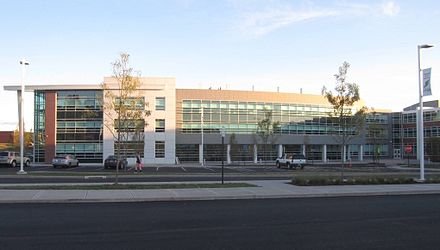
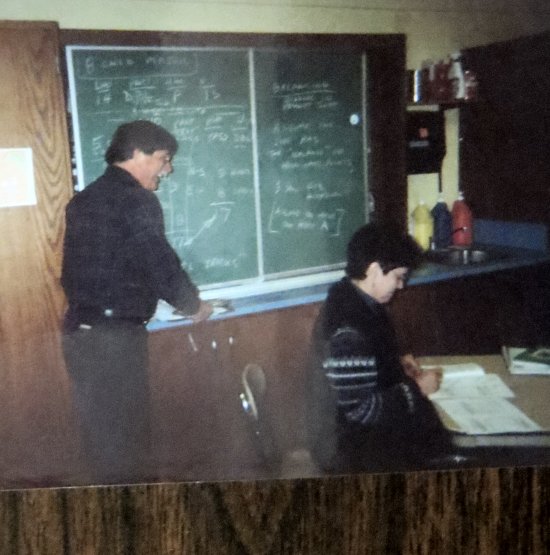
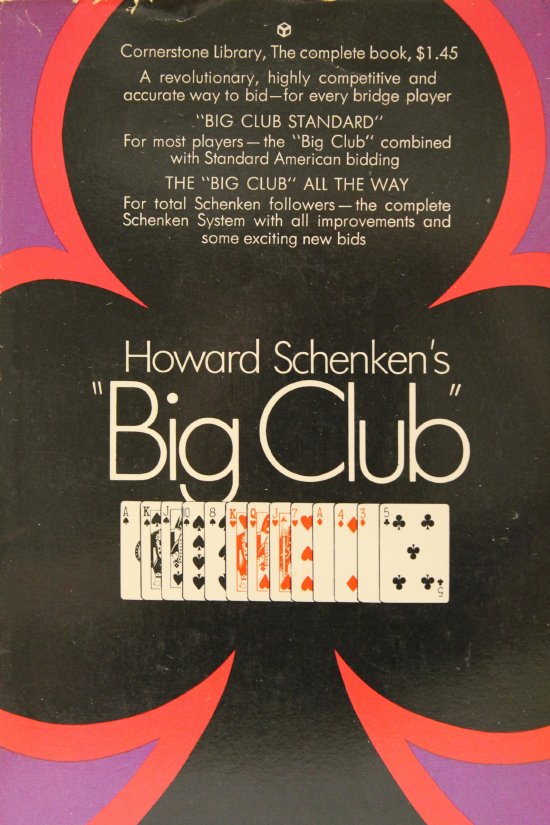
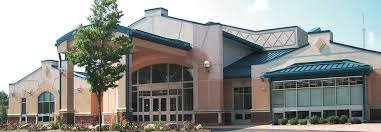
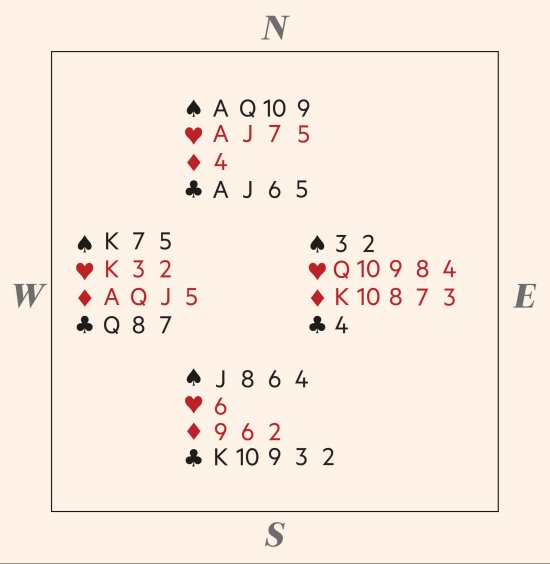
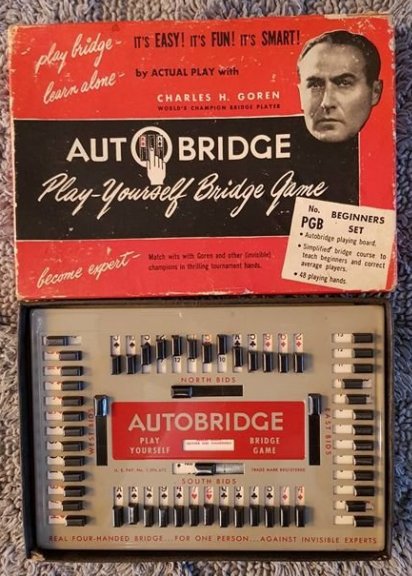
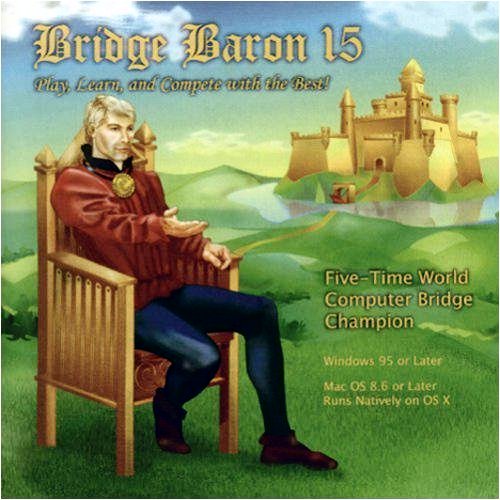
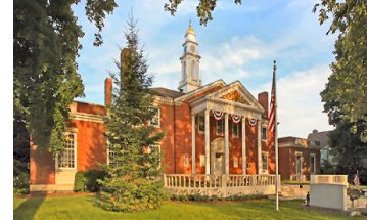

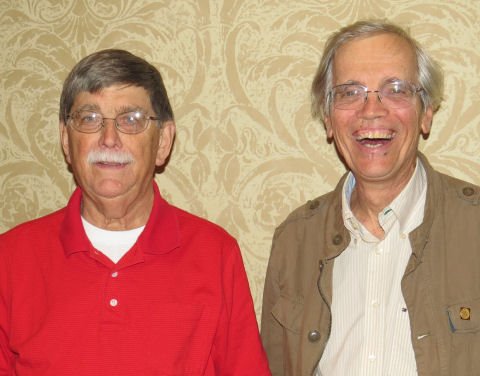

Pingback: 2004-2009 Partners at the Simsbury Bridge Club Part 1 | Wavablog
Pingback: 2004-2009 Members of the Simsbury Bridge Club Part 1 | Wavablog
Pingback: 2004-2010 Members of the Simsbury Bridge Club Part 1 | Wavablog